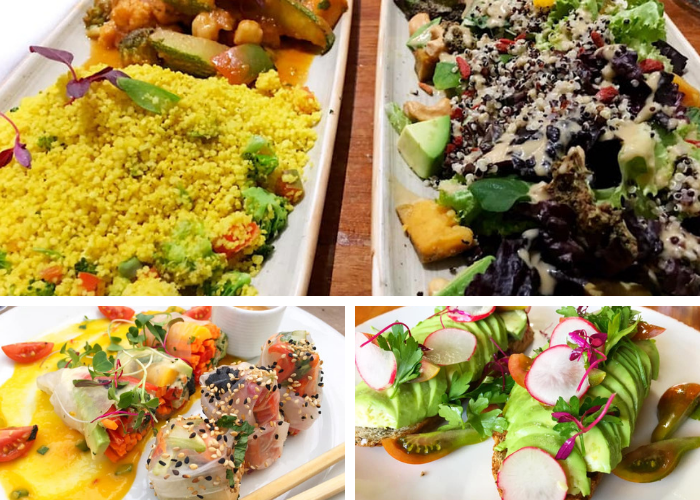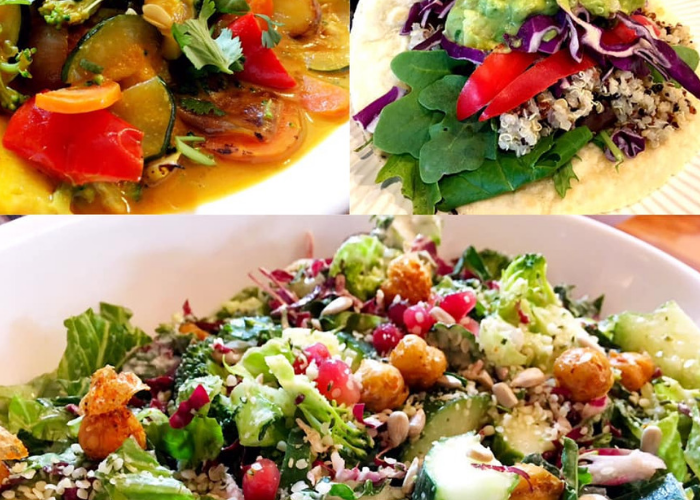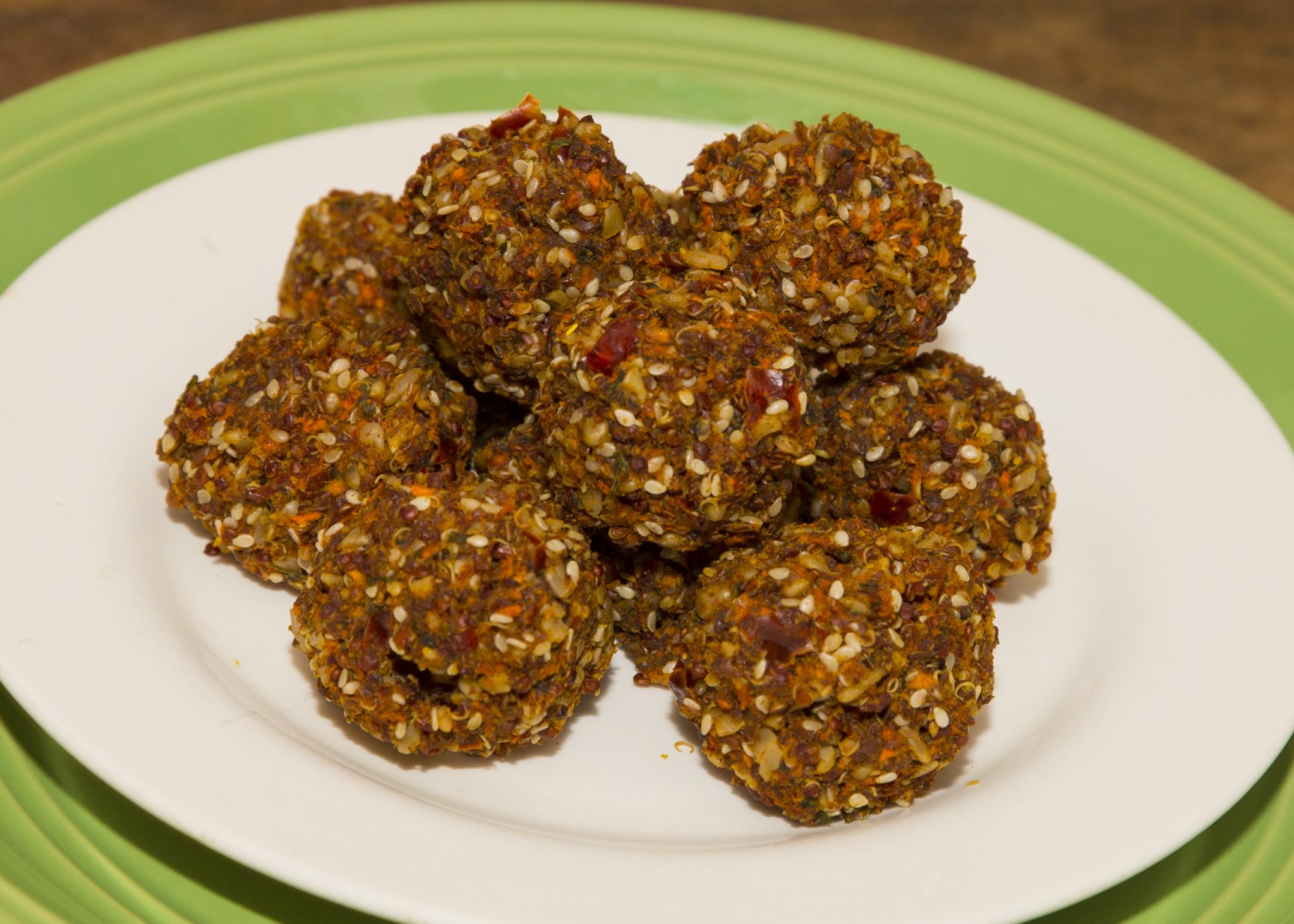 So MUCH to eat and so little understanding of HOW and WHAT to eat! Today humans have the luxury of walking into a supermarket and finding millions of products to satisfy any of their taste buds desires. With all of the options in the world, you’d think we would be able to eat properly. But in reality the opposite has occurred. With more options, come more questions. What should I eat and how much of it should I consume? Should I buy organic? How many meals a day? Eat meat or go vegetarian?…with reports and studies contradicting themselves everyday, no wonder we are all so confused! Here are some guidelines that will help clear the dust. I live by these rules and hope you can find some answers to your dietary conundrums.
So MUCH to eat and so little understanding of HOW and WHAT to eat! Today humans have the luxury of walking into a supermarket and finding millions of products to satisfy any of their taste buds desires. With all of the options in the world, you’d think we would be able to eat properly. But in reality the opposite has occurred. With more options, come more questions. What should I eat and how much of it should I consume? Should I buy organic? How many meals a day? Eat meat or go vegetarian?…with reports and studies contradicting themselves everyday, no wonder we are all so confused! Here are some guidelines that will help clear the dust. I live by these rules and hope you can find some answers to your dietary conundrums.
1.) Eat Whole Food: This means whole grains, fruits and veggies. Avoid heavily processed food that came from the industrialized era like margarine, twinkies, and products like non-dairy creamer (what is that stuff made of anyway?). A good rule of thumb is to eat what your great-great-grandmother would eat and recognize. Think before the modernization of processed foods.
2.) Don’t Buy Into Health Claims: Thousands of products today have labels splashed across their packages claiming to be “heart healthy” or to have the power to “lower cholesterol.” The truth is the American Heart Association charges food makers for their endorsements!
3.) Check The Label For Ingredients: Avoid foods that contain ingredients that are unfamiliar, unpronounceable, more than five in number, or that contain high-fructose corn syrup. This is a tell tale sign of extreme processing and therefore not REAL food.
4.) Get Out Of The Supermarket: One place you’re sure to not find high fructose corn-syrup or preservatives is the farmer’s market. Farmer’s markets boast fresh produce that is locally grown and picked at the height of nutritional quality. Which is much better than produce grown half way around the world and picked a month ago.
5.) Think Quality More Than Quantity: And yes this could mean paying more and eating less. Reduce your exposure to pesticides as much as possible by eating organic. If buying all organic is unaffordable or unavailable, buy the organic fruits and veggies that are have thinner outer membranes that are known to absorb more pesticides.
 6.) Eat Mostly Plants: Especially those with leaves. Scientist’s can’t agree on what is so amazing about plants… is it the fiber? the antioxidants? But, they do agree that plants are a huge must in any diet. Also, don’t forget about the seaweeds and micro algae’s that contain minerals found in no other organism. Plus, plants have a lot fewer calories than other options so you can fill up on them and still maintain a healthy waistline.
6.) Eat Mostly Plants: Especially those with leaves. Scientist’s can’t agree on what is so amazing about plants… is it the fiber? the antioxidants? But, they do agree that plants are a huge must in any diet. Also, don’t forget about the seaweeds and micro algae’s that contain minerals found in no other organism. Plus, plants have a lot fewer calories than other options so you can fill up on them and still maintain a healthy waistline.
7.) If You Like Meat Like Me: Go for organic, free range, no-antibiotic white meats like, chicken and turkey. Fish are a must in any diet, especially for the fatty acids, but make sure to stick to wild caught fish. The farm-raised types have been found to contain high levels of mercury and are given antibiotics because of poor living conditions. For more information on the best and worst fish to eat for your health, check this out.
7.) Eat A More Traditional Diet: Try Italian, Japanese, French or Greek! Research shows that those that eat a more traditional diet that has been around for hundreds, if not thousands of years, are healthier. Be sure to take a look at HOW these cultures eat along with thier diet of choice. These traditional diets might look to the naked eye as unhealthy with saturated fats and tons of alcohol, but the key is portion control and slow social eating habits.
 8.) Learn To Cook: By learning to cook you won’t have to go buy a frozen lean cuisine because you will now how to cook the same meal at home with whole foods. Plus, once you know how to cook you can change your fav recipes into healthy, nutritious meals. You will know where your food came from and what it’s made of!
8.) Learn To Cook: By learning to cook you won’t have to go buy a frozen lean cuisine because you will now how to cook the same meal at home with whole foods. Plus, once you know how to cook you can change your fav recipes into healthy, nutritious meals. You will know where your food came from and what it’s made of!
9.) Eat A Wide Variety Of Foods: Eating like a true omnivore is the best way to get as many nutrients and antioxidants as possible. Cover all your nutrient bases by adding novel fruits and veggies to your diet. For example, at Whole Foods you can choose from 14 different types of dark leafy greens, so try them all!

10.) Eat Seasonally: In Traditional Chinese Medicine it’s believed that the seasons have a profound effect on human growth and well-being…that we are influenced by climatic changes and should live in harmony with them. Therefore, with each season comes a recommendation of what is best for that time of year:
Spring: Diet should be the lightest of the year. Eat raw foods, including those with a sweet and/or pungent flavor. Examples, young plants, fresh greens, basil, rosemary, grains, legumes, seeds, and sweet starchy veggies like carrots, and beets.
Summer: Eat a brightly colored, vast array of summer fruits and vegetables. Cook lightly and regularly add a little spicy, pungeant or even fiery flavor. Best fruits include, apples, watermelon, limes, and lemons. Cooling veggies to throw in a meal are cucumber, sprouts, and all types of greens for salads.
Autumn: Eat astringent and heartier flavors. Bake and saute food for a cooler climate. Foods to enjoy include more sour flavors such as, sourdough bread, olives, leeks, cheese, yogurt, lemons, limes, and grapefruits.
Winter: Eat salty and bitter foods. Warm hearty soups, whole grains, and steamed winter greens are staples of this cold time of year. Examples include, lettuce, watercress, endive, escarole, turnip, rye, oats, cabbage, miso, seaweeds, and barley. All salty foods in moderation of course.
11.) Cut Out Dairy and Wheat: If your body adversely reacts to diary and wheat be sure to try all the other wonderful alternatives like soy milk…yuummm! Don’t know if they effect you? Go a week without them in your diet and see how you feel. Here is some more information on wheat intolerance.
12.) Eat Healthy Oils: Cook with unrefined or expeller pressed monounsaturated oils like, olive, sesame, almond, canola, and avocado. Check the label and then RUN from dangerous hydrogenated or partially hydrogenated vegetable oils, margarine, or shortening. All of these oils are heavily processed and clog arteries!!
13.) Eat Like A King In The Morning and A Pauper At Night: By making sure you have a hardy breakfast you are preparing yourself for the energy needed for the long day ahead.This way you have the whole day to digest and burn off those calories. If you eat the bulk of your food for the day at dinner all the food will go to bed with you and just sit in the stomach.
14.) Chew Your Food For Healthy Digestion: The art of chewing has been taught for centuries by the ancient Chinese and Japanese. Digestion begins in the mouth with the enzymes in your saliva, so by chewing your food more you will break down the food sooner, releasing nutrients and aiding in smooth digestion. Try counting the chomps of each bite 15-30 times at the beginning of a meal.
15.) Watch Portion Size: A good rule of thumb is to use a salad plate instead of a monsterous dinner plate. Americans are known for their huge portions, so check the label or research online for healthy serving sizes.

16.) Alcohol and Sweets: According to the Dietary Guidelines for Americans, if your going to drink, women should consume only 1 alcoholic drink per day and 2 per day for men. When I drink I try to stick to something a little healthier like red wine because of it’s heart healthy benefits. If your craving a cocktail, go for a low calorie vodka and cranberry juice. When it comes to sweets moderation and portion control are key. There is no need to deprive yourself, but eating a whole chocolate bar is not a good idea! I love chocolate like everyone else, so try a high quality dark chocolate with a 70% or more cocoa. Your heart will thank you.
17.) Enjoy Your Meal: To really enjoy and taste your food it’s best to focus on eating. This means turning off the TV. AAAHHH…I know I am notorious for eating my food in front of the tube! Instead, try sitting down to the table with some good friends or family members and strike up a fun conversation. Take your time and actually taste what your eating.
Oh yeah…and don’t be like this guy pictured here! haha…
Wondering where I got all of this advice? Check out Michael Pollan’s article and book The Omnivore’s Dilemma: A Natural History of Four Meals. Healing With Whole Foods, by Paul Pitchford is also an amazing resource.







